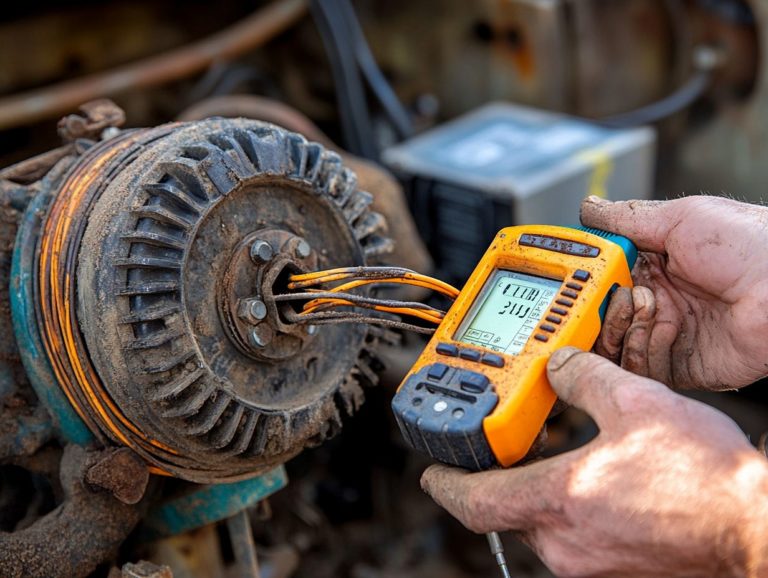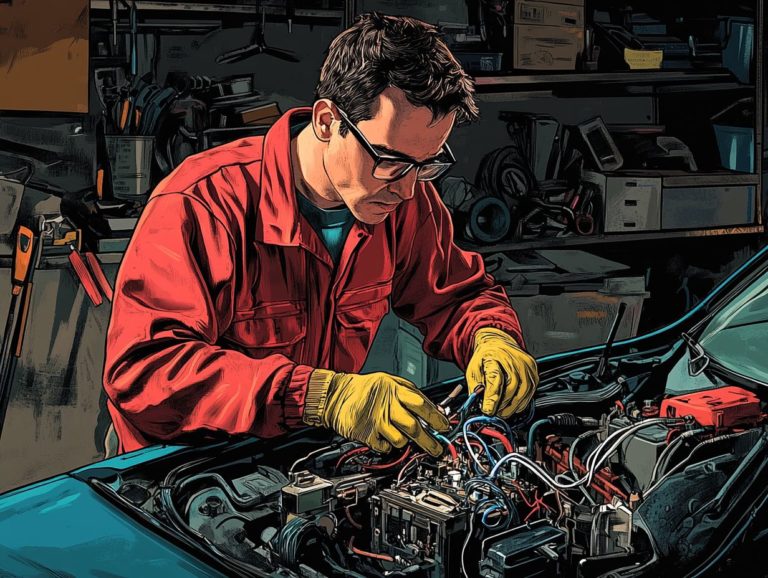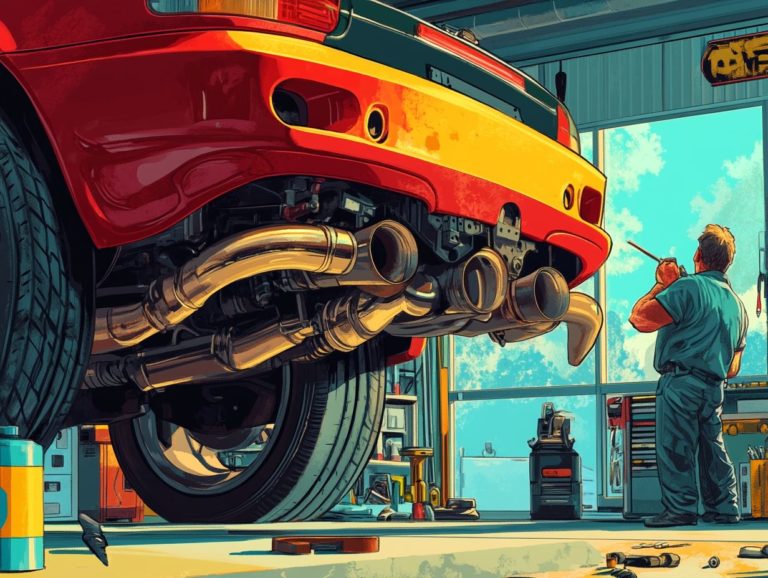How to Check Your Brake Pads?
Maintaining your vehicle’s brake system is crucial for your safety on the road. Regularly checking your brake pads is an integral part of that maintenance.
Brake pads are essential for effectively stopping your car. Being aware of when they need to be replaced can save you from expensive repairs and potentially dangerous situations.
This article delves into the importance of brake pads. It highlights the signs that indicate they require attention and provides a straightforward step-by-step guide for checking them. You’ll also find a list of necessary tools and invaluable tips for keeping them in peak condition.
Stay informed and prioritize your safety by learning how to care for this vital component of your vehicle.
Contents
Key Takeaways:

- Regularly checking your brake pads is crucial for your vehicle’s safety.
- Common warning signs of worn brake pads include squeaking or grinding noises, vibrations, and longer stopping distances.
- To check your brake pads, follow a step-by-step guide and have the necessary tools such as a jack and flashlight.
Why Checking Your Brake Pads is Important
Checking your brake pads is crucial for extending the life of your vehicle. It is equally important for the safety of you and your passengers on the road.
The brake system plays a vital role in overall braking performance. This can fluctuate based on your driving style and the conditions you encounter.
If you overlook regular inspections, you risk worn brake pads. These can decrease effectiveness and even lead to brake failure.
Therefore, prioritizing routine vehicle maintenance and inspections is essential, especially in bustling cities like Austin, Dallas, and Fort Worth.
The Role of Brake Pads in Vehicle Safety
Brake pads are key components of your vehicle’s safety. They enable the braking system to effectively bring your vehicle to a halt when necessary.
When you press down on the brake pedal, the part that squeezes the brake pads applies force, pushing them against the rotor. This creates friction, generating the resistance needed to slow down or stop the wheels from turning.
As time goes on, regular vehicle maintenance becomes increasingly important. Brake pads naturally wear down and will require replacement to ensure optimal performance.
By understanding the relationship between the brake pads, caliper, and rotor, you can appreciate their collective role in maintaining superior braking capability and enhancing your safety on the road.
Signs that Your Brake Pads Need to be Checked
Recognizing the signs that indicate your brake pads require attention can spare you from expensive repairs and enhance your safety on the road.
Key indicators include:
- worn brake pads
- unusual brake noises
- the necessity for a thorough brake inspection
Common Warning Signs
Common warning signs that your brake pads may need immediate attention include noticeable brake noise, visible wear symptoms, and the illumination of the brake warning light on your dashboard.
These indicators can manifest as squeaking or grinding sounds during braking. This suggests that the pads are worn down and nearing the end of their life.
You might also experience a spongy brake pedal feel. This could indicate air in the brake lines or fluid issues.
If you notice that your vehicle pulls to one side when braking, it points to uneven wear that can compromise your stopping ability.
Ignoring these signals can lead to diminished braking performance, increased stopping distances, and potential safety hazards.
Addressing any of these issues promptly is essential to ensure your safety on the road.
How to Check Your Brake Pads
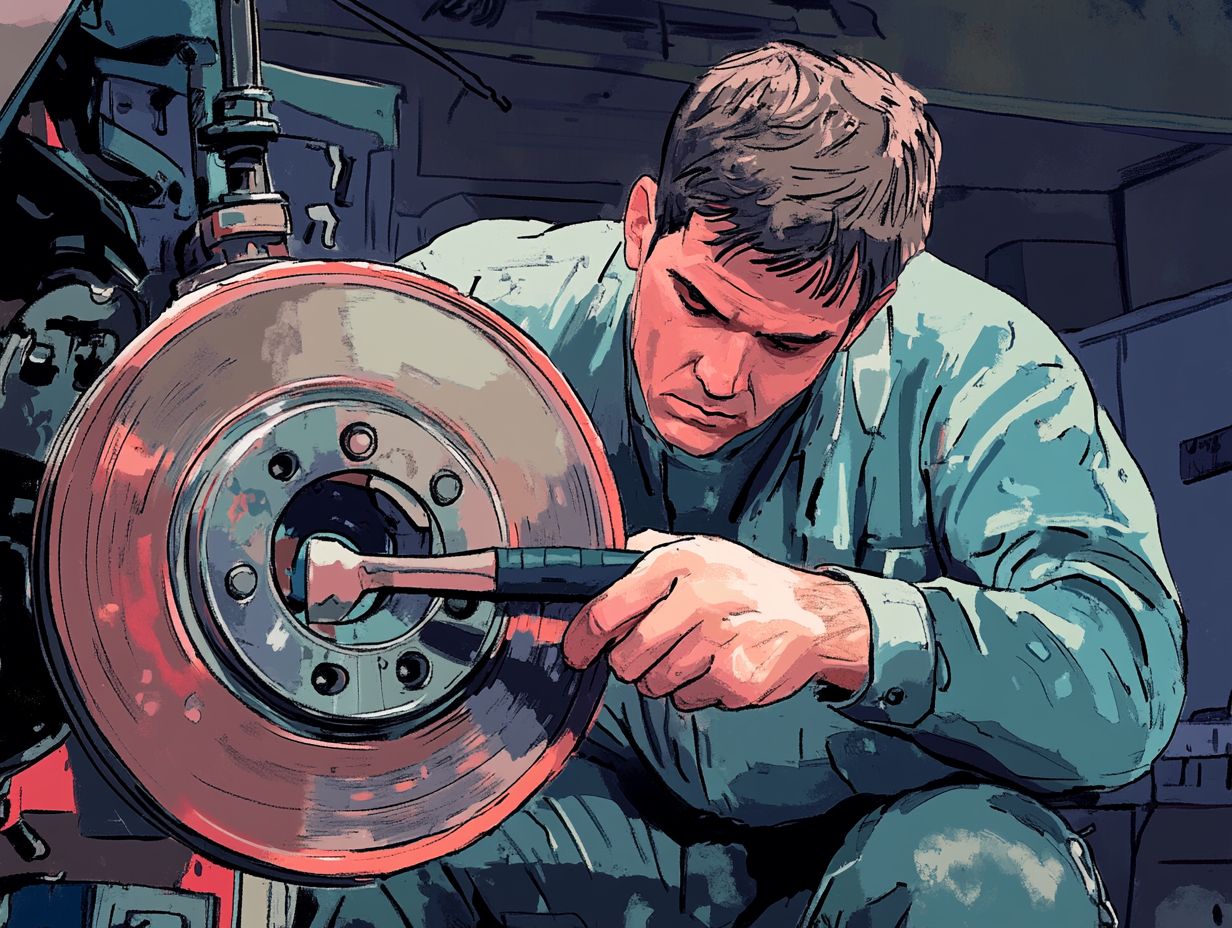
To ensure your vehicle s braking performance, you should regularly check your brake pads.
Inspecting their thickness and evaluating their condition is straightforward yet essential. You won t want to overlook it.
Keeping your brakes in top shape can make all the difference in your driving experience.
Don’t wait! Check your brake pads today to ensure a safer drive tomorrow!
Your Ultimate Brake Pad Inspection Guide
Follow this step-by-step guide to inspect your brake pads effectively. Start with checking the wheels and ensure you have the right tools on hand for a thorough assessment, including knowing how to inspect your brake fluid levels.
-
First, ensure your vehicle is parked on a flat surface and engage the parking brake for safety.
-
Next, gather essential tools like a lug wrench, jack stands, and a flashlight to facilitate the inspection process.
-
Once you’re prepared, lift the vehicle with a jack and securely place it on jack stands before removing the wheels.
-
Now, with the wheels off, take a moment to visually inspect the brake pads for thickness. For a comprehensive guide, refer to how to check your car’s brake pads. Look for wear indicators, which are small grooves in the brake pad that show when the pad needs replacing. It’s crucial to check both inner and outer pads as they can wear unevenly.
-
Pay attention to any unusual sounds or vibrations during your inspection; these could point to other underlying brake issues.
-
Finally, after your inspection, make sure to reassemble everything properly to maintain vehicle safety.
Tools and Materials Needed
To carry out a thorough brake inspection, it s crucial for you to have the right tools and materials at your disposal.
Key items you should have include:
- Brake Fluid Tester: To check fluid quality.
- Sturdy Jack: To lift your vehicle safely.
- Torque Wrench: To ensure precise checks on your brake pads.
What You’ll Need to Perform a Brake Pad Check
To conduct a brake pad check, gather a set of essential tools: a jack, a tire iron, and a brake fluid replacement kit. These important instruments allow for a thorough inspection of your braking system.
The jack is your best friend for safely lifting the vehicle. It provides you with the access needed to inspect the brake components in detail.
The tire iron is critical for removing the lug nuts from the wheel, effortlessly granting you entry to the braking system underneath.
Meanwhile, a brake fluid replacement kit is crucial for evaluating the fluid levels and its condition. Old or contaminated brake fluid can significantly impact performance and may lead to potential failure.
With these tools at your disposal, you can accurately assess the state of your brake pads, identifying any wear or damage that might compromise your vehicle’s safety.
Replacing Worn Brake Pads
Understanding when to replace worn brake pads is essential for maintaining optimal brake life and ensuring effective braking performance. Recognizing signs of wear and following necessary steps for a smooth brake pad replacement is vital.
When to Replace and How to Do It
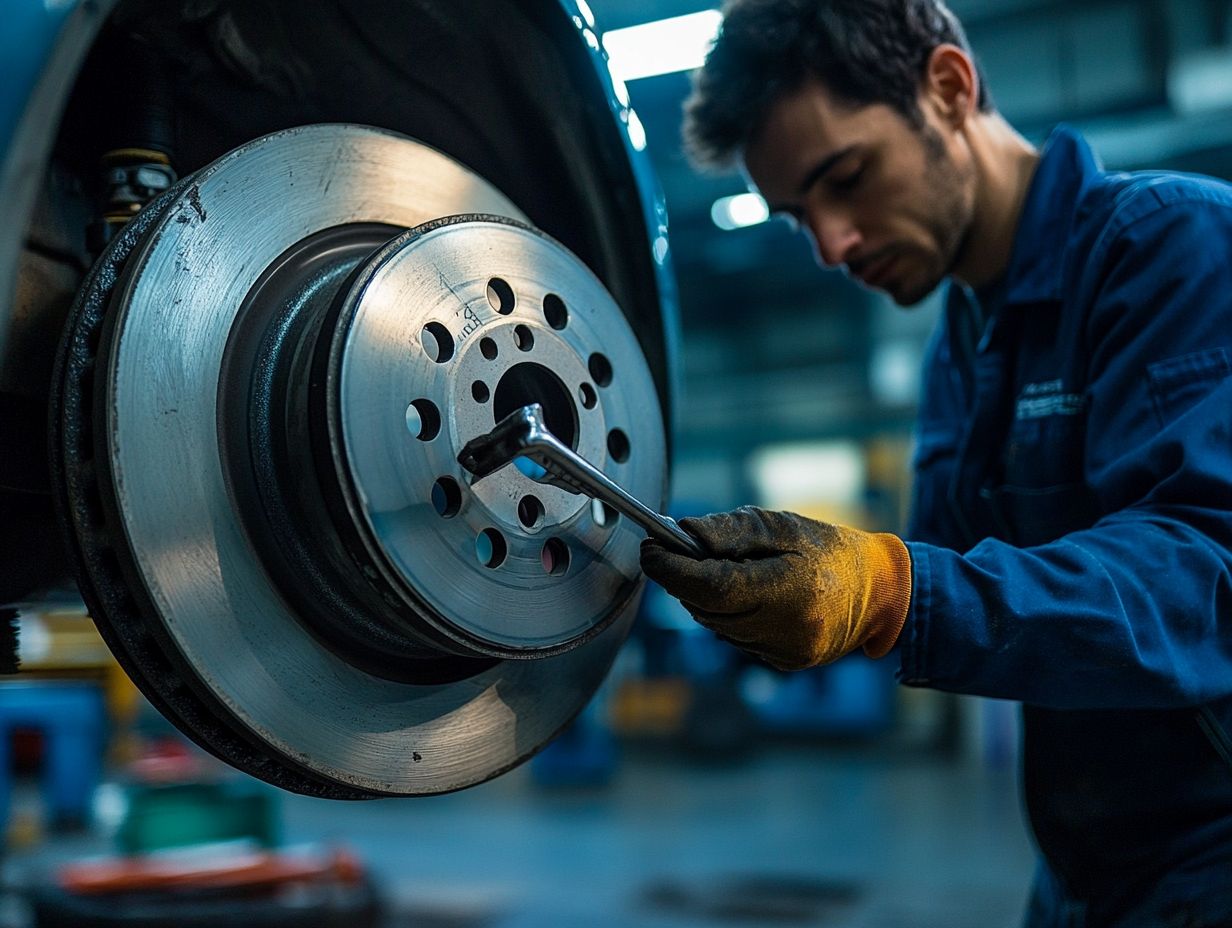
Knowing when to replace your brake pads is crucial. Generally, if the thickness of your brake pads has worn down to less than 3mm, it s time to consider a replacement. Use the inspection process to guide your decisions.
Beyond just measuring thickness, visually inspect for cracks or glazing. Glazing occurs when the brake pads become shiny and hard, which can impede performance.
Keep an eye out for signs of uneven wear on the pad surface or excessive dirt accumulation; these may indicate it s time for a change.
Performance indicators, like squeaking or grinding noises when braking, reduced responsiveness, or vibrations, suggest that your brake pads may be failing. Regularly monitoring these factors not only ensures your safety but also prevents potential damage to braking components, saving you from costly repairs later.
By staying attentive to these details, you can significantly enhance the longevity and effectiveness of your vehicle’s braking system.
Maintaining Your Brake Pads for Optimal Performance
Regular maintenance is essential for ensuring your brakes perform at their best. Closely monitor your brake pads and schedule timely inspections to identify any issues before they escalate.
Taking these proactive steps can significantly enhance your safety and driving experience.
Don’t wait until it’s too late! Schedule your brake inspection today for a safer ride!
Tips for Keeping Your Brake Pads in Good Condition
Keep your brake pads in excellent condition by adjusting your driving style. Avoid aggressive braking to extend their lifespan.
Practice smoother acceleration and gradual deceleration. This minimizes wear on your brakes.
Incorporate routine checks into your maintenance schedule. Inspect brake fluid levels and pad thickness to enhance performance and safety.
Check these aspects regularly to extend the life of your brake components. This ensures a safer driving experience, especially in challenging weather where stopping distance is critical.
Combine mindful driving habits with regular inspections. This will prolong the lifespan of your brake pads and maintain optimal braking efficiency.
Frequently Asked Questions
1. How do I know if my brake pads need to be replaced?
Check for warning signs such as squeaking or grinding noises, a vibrating brake pedal, or longer stopping distances. Visually inspect the brake pads for thickness and wear. If they are less than 1/4 inch thick, it’s time to replace them.
2. What tools do I need to check my brake pads?
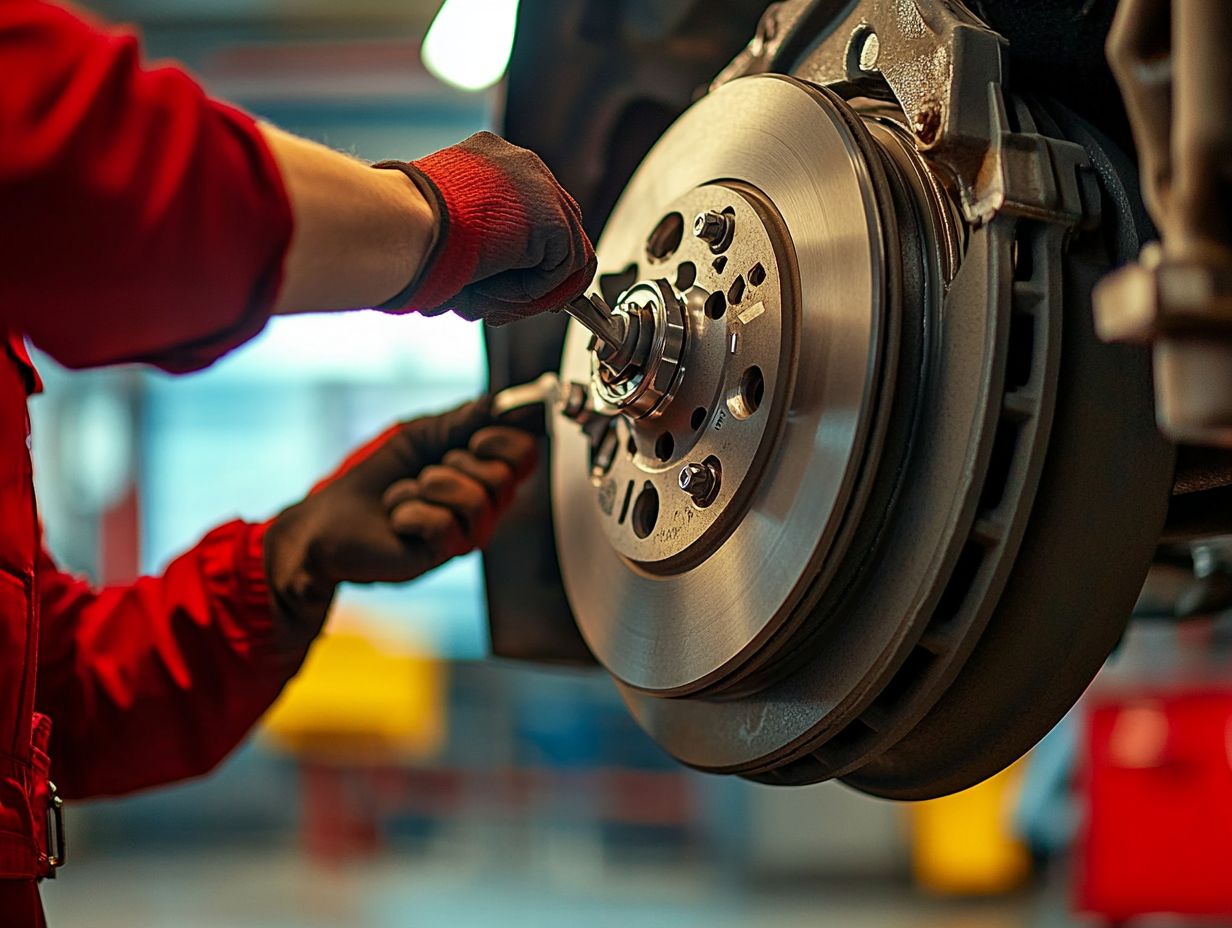
You will need a jack, jack stands, a lug wrench, a flashlight, and a ruler or brake pad thickness gauge. These tools help you safely lift your car, remove the wheels, and measure the thickness of your brake pads.
3. How often should I check my brake pads?
Check your brake pads every 6 months or every 6,000 miles, whichever comes first. If you notice any warning signs or abnormalities while driving, check your brake pads right away. Your safety depends on it!
4. Can I check my brake pads without removing the wheels?
Yes, you can use a flashlight to look through the spokes of your wheel and check the brake pads. However, it’s best to remove the wheels for a more accurate inspection and to inspect the brake pads on both sides of the car.
5. How do I check the thickness of my brake pads?
Using a ruler or brake pad thickness gauge, measure the thickness of the brake pad. If it is less than 1/4 inch, it’s time to replace them. Also, ensure the brake pads are wearing evenly and not at an angle, as this could indicate a problem with the brake caliper.
6. Can I replace my own brake pads?
While it is possible to replace your own brake pads, it is best to have a professional mechanic do it. Brake systems are complex and require proper knowledge and tools for safe replacement. Improperly installed brake pads can lead to dangerous driving conditions.
Start checking your brake pads today your safety is worth it!

